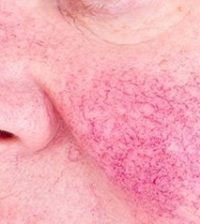- Cancer Takes Tough Toll on Family Finances
- You Might Fare Better If Your Doctor Is Female, Study Finds
- CDC Launches Online ‘Heat Forecaster’ Tool as Another Summer Looms
- Biden Administration Sets Nursing Home Staffing Minimums
- Neosporin Ointment in the Nose Might Be Potent Antibiotic
- Physical Ills Often Plague People With Schizophrenia, Bipolar
- Taking Psilocybin for Depression? Relationship With Therapist Is Key
- Stick to Heimlich Maneuver Not ‘Anti-Choking’ Devices, FDA Says
- Women in the Military at Risk for Low-Weight Babies
- Repeat Blasts Can Damage Soldiers’ Brains, Study Confirms
FDA Seeks to Improve Safety of Antiseptic Swabs


THURSDAY, Nov. 14Manufacturers of antiseptic swabs and solutions are being asked to make voluntary labeling and packaging changes, the U.S. Food and Drug Administration said Thursday.
The goal is to improve the products’ safety when applied to the skin before surgery or injections.
Reports of infections linked to the over-the-counter antiseptics are infrequent but continuing, the agency said in a statement explaining its request.
When used properly, these antiseptic swabs and solutions safely reduce the number of bacteria on patients’ skin before they undergo an operation or receive shots. But use of contaminated antiseptics has led to localized infections and even death, according to the FDA.
“Most often, contamination of [antiseptic products] occurs when organisms are introduced into the product by users,” the agency said in the news release.
The FDA is asking for labeling changes and single-use packaging for antiseptic products that contain widely used ingredients such as alcohol, iodophors, chlorhexidine gluconate, and quaternary ammonium. The products are sold as solutions, swabs, solution-saturated pads and applicators in both single-use and multiple-use formulations.
Antiseptic products sold in the United States do not have to be manufactured as sterile. If an antiseptic product is labeled as sterile, it means it underwent a process during manufacturing to eliminate all potential germs.
But even antiseptic products manufactured with a sterile process can become contaminated if proper care is not taken when using them, the experts warn. The term nonsterile on the product label means it was not sterilized during manufacturing, but it does not mean the product contains harmful bacteria, the FDA explained.
To reduce the risk of contamination with bacteria during use, the FDA is asking manufacturers to package these antiseptic products in single-use containers and to label the products as sterile or nonsterile.
That would mean applying the antiseptics in these single-use containers only one time to one patient. Applicators and any unused solution should be discarded after the single application, the agency said. Health care providers and patients should not dilute these products after opening them and should use them according to the directions on the label, the FDA advised.
More information
The U.S. Food and Drug Administration outlines proposed labeling and packaging changes for antiseptic products.
Source: HealthDay
Copyright © 2024 HealthDay. All rights reserved.










